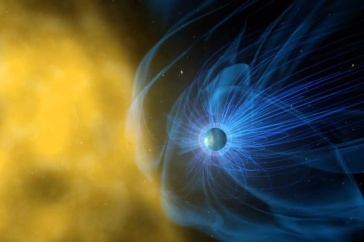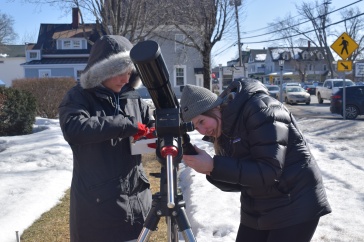
Image by NASA
As NASA launches the Orion spacecraft as part of the Artemis 1 mission, the United States will be one step closer to the moon for the first time in 50 years. UNH scientists have made an important contribution to this goal: they're determining if radiation levels at the moon, which can cause serious health issues, are safe enough for astronauts to return.
To measure those levels, researchers at UNH’s Space Science Center built one of the two instruments on NASA’s Lunar Reconnaissance Orbiter that has been monitoring space radiation levels. The Cosmic Ray Telescope for the Effects of Radiation (CRaTER) was launched in 2009 and has been making crucial measurements while orbiting the moon ever since.

“Artemis 1 is the next important steppingstone to putting humankind back on the moon,” said Harlan Spence, director for the UNH Institute of the Study of Earth, Oceans, and Space and principal investigator for the CRaTER instrument. “CRaTER has diligently been monitoring radiation so Artemis will not venture into the unknown but rather confidently into a well understood environment with a design and instruments needed to make a safe journey with astronauts.”
The unmanned Artemis 1 mission is expected to liftoff Sept. 3 between 2:17 and 4:17 p.m. ET from Kennedy Space Center in Florida, but the mission team will review data, weather and overall readiness on Thursday, Sept. 1. In place of real astronauts, the Orion spacecraft contains instrumented mannequins or “moonikins” that will, in part, measure radiation while in flight. NASA plans to use that same spacecraft to eventually shuttle humans on the same trip back to the moon.
The UNH Institute for the Study of Earth, Oceans, and Space (EOS) is UNH's largest research enterprise, comprising six centers with a focus on interdisciplinary, high-impact research on Earth and climate systems, space science, the marine environment, seafloor mapping and environmental acoustics. With approximately 100 principal investigators managing more than 400 individual grant awards, and with annual expenditures exceeding $45 million, EOS fosters an intellectual and scientific environment that advances visionary scholarship and leadership in world-class and graduate education.
-
Written By:
Robbin Ray ’82 | UNH Marketing | robbin.ray@unh.edu | 603-862-4864

















































